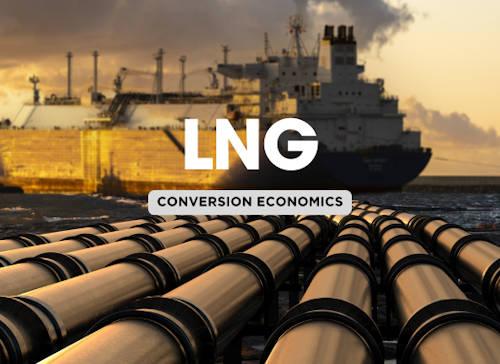The Economics of Converting Existing Ships to LNG

LNG conversion not only offers environmental benefits but can also lead to significant operational cost savings in the long run. However, the upfront investment for conversion can be considerable, involving complex engineering requirements, equipment costs, and potential downtime during the retrofit process. This cost-benefit analysis dives into the initial financial outlay, operational adjustments, and potential return on investment, providing shipowners with a realistic outlook on LNG conversion. Here’s a breakdown of key cost-benefit factors for those considering LNG conversion:
Payback Period: Depending on fuel savings, incentives, and vessel type, the payback period for LNG conversions generally ranges from 5 to 15 years, especially favorable for high-consumption vessels.
Initial Investment: Includes LNG tank installation, engine modifications, and necessary safety systems for handling LNG fuel.
Operational Savings: LNG is typically cheaper than traditional marine fuels, and reduced sulfur emissions mean less wear on engines and lower maintenance costs.
Market Incentives: LNG-powered vessels may receive market incentives, tax breaks, and other financial support, enhancing their value over time.
** The data in these tables are estimations only. Please conduct research for current and accurate figures for your specific vessel **
| ShipUniverse: Conversion Costs by Ship Type | |
|---|---|
| Ship Type | Estimated Conversion Cost (USD) |
| Container Ship (10,000+ TEU) | $25 - $35 million
|
| Bulk Carrier (Capesize) | $18 - $28 million
|
| Oil Tanker (VLCC) | $20 - $32 million
|
| Ro-Ro (Roll-On/Roll-Off) | $10 - $18 million
|
| Passenger Ferry | $12 - $22 million
|
Payback Period and Return on Investment (ROI)
Converting a vessel to LNG involves considerable upfront expenses, but the long-term operational savings and compliance advantages often result in a favorable return on investment. Here are the key factors influencing the payback period for LNG conversion:
- Fuel Cost Savings: LNG generally costs less than traditional marine fuels like heavy fuel oil (HFO) and marine gas oil (MGO), helping to offset conversion costs over time.
- Maintenance Reduction: LNG combustion produces fewer sulfur oxides and particulate matter, which leads to less engine wear and reduced maintenance expenses.
- Incentives and Tax Breaks: Certain regions offer financial incentives or tax benefits for LNG conversion, further accelerating ROI.
- Operational Scale: Larger ships, with higher fuel consumption, tend to recoup conversion costs faster than smaller vessels, with an estimated payback period of 4-8 years depending on usage.
Estimated Fuel Savings per Year (Post-Conversion)
The table below provides average annual fuel savings for various vessel types after LNG conversion, offering insight into how different ship classes benefit from switching to LNG.
| ShipUniverse: Estimated Fuel Savings per Year (Post-Conversion) | |
|---|---|
| Ship Type | Estimated Annual Fuel Savings (USD) |
| Container Ship (10,000+ TEU) | $3 - $5 million
|
| Bulk Carrier (Capesize) | $2 - $4 million
|
| Oil Tanker (VLCC) | $2.5 - $4.5 million
|
| Ro-Ro (Roll-On/Roll-Off) | $1 - $2 million
|
| Passenger Ferry | $1.5 - $3 million
|
Environmental Incentives and Regulations
Many governments and regulatory bodies are encouraging LNG adoption through various incentives and stricter emissions regulations. Shipowners who convert vessels to LNG often qualify for significant financial benefits and compliance advantages, reducing the effective cost of conversion. Key areas to consider include:
- Tax Credits and Subsidies: Some countries offer tax breaks or direct subsidies to shipowners converting to LNG, lowering the upfront financial burden.
- Emission Reduction Compliance: LNG helps shipowners meet International Maritime Organization (IMO) regulations, especially with sulfur emissions caps, which reduces the risk of fines and restrictions.
- Carbon Credits: Some regions offer carbon credits for LNG-powered vessels, allowing shipowners to trade or sell credits as an added financial benefit.
- Green Financing Opportunities: LNG projects may qualify for green loans and favorable financing terms, as they align with environmental and sustainability criteria.
Environmental Impact (CO₂ and Sulfur Reductions)
The following table provides an estimate of the environmental impact by ship type after conversion to LNG, highlighting reductions in CO₂ and sulfur emissions. These figures help illustrate how LNG conversions contribute to cleaner operations and compliance with emission regulations.
| ShipUniverse: Environmental Impact (CO₂ and Sulfur Reductions) | ||
|---|---|---|
| Ship Type | CO₂ Reduction (%) | Sulfur Reduction (%) |
| Container Ship (10,000+ TEU) | 20-25%
|
Nearly 100% |
| Bulk Carrier (Capesize) | 18-22%
|
Nearly 100% |
| Oil Tanker (VLCC) | 20-28%
|
Nearly 100% |
| Ro-Ro (Roll-On/Roll-Off) | 15-20%
|
Nearly 100% |
| Passenger Ferry | 16-21%
|
Nearly 100% |
Retrofit Challenges and Technical Requirements
Converting a ship to LNG requires extensive technical modifications that vary depending on the vessel’s age, type, and current fuel system. While the process involves significant structural and engineering changes, LNG conversion also brings logistical considerations. Here are some of the main challenges:
- Tank Installation and Storage Space: LNG requires special cryogenic tanks for storage at very low temperatures, which often need to be custom-fitted, taking up more space than conventional fuel tanks.
- Dual-Fuel Engines and Propulsion Systems: Converting to LNG often means installing dual-fuel engines, allowing the ship to switch between LNG and traditional fuel, which is crucial for areas where LNG is less available.
- Safety Systems and Training: LNG is highly flammable, so additional safety measures and crew training are essential to prevent leaks and manage emergencies.
- Structural Modifications and Downtime: Structural changes are often needed to accommodate LNG tanks and piping, which can require extended shipyard time, leading to operational downtime.
Operational Costs Before and After Conversion
This table provides an overview of operational cost changes that shipowners can expect after converting a vessel to LNG. It covers aspects like fuel, maintenance, and compliance costs, offering insight into potential long-term savings.
| ShipUniverse: Operational Costs Before and After LNG Conversion | ||
|---|---|---|
| Cost Category | Pre-Conversion Costs (USD) | Post-Conversion Costs (USD) |
| Fuel (annual average) | $6 - $8 million
|
$4 - $5 million
|
| Maintenance (annual average) | $1.5 - $2 million
|
$1 - $1.5 million
|
| Compliance Costs (annual average) | $500,000 - $1 million
|
$200,000 - $500,000
|
| Crew Training (initial) | N/A
|
$50,000 - $100,000
|
Comparative Analysis – LNG Conversion vs. New LNG-Built Ships
When deciding between converting an existing vessel to LNG or purchasing a newly built LNG-fueled ship, shipowners must weigh the cost, timeline, and overall operational benefits. Here’s a breakdown of factors to consider:
- Upfront Costs: Conversions are often less expensive than buying new LNG-built ships, with conversion costs typically around 20-30% of the cost of a new vessel.
- Timeline: Conversion projects can be completed within several months, while building a new LNG vessel from scratch could take 1-2 years.
- Environmental Impact: Conversions allow older ships to comply with modern emission standards, but new LNG-built ships are often more efficient and designed specifically for optimal LNG performance.
- Operational Efficiency: New LNG vessels tend to have enhanced fuel efficiency due to advanced design, whereas retrofitted ships may not fully match this performance.
- Resale Value: Newly built LNG ships may have higher market value and longer life expectancy compared to converted vessels.
Comparative Analysis of LNG Conversion vs. New LNG-Built Ships
The following table provides a side-by-side comparison of the key considerations for LNG conversions versus purchasing a new LNG-built vessel. This can help shipowners make a more informed decision based on their specific operational needs and financial goals.
| ShipUniverse: Comparative Analysis of LNG Conversion vs. New LNG-Built Ships | ||
|---|---|---|
| Factor | LNG Conversion | New LNG-Built Ship |
| Upfront Cost | $10 - $35 million, depending on vessel type
|
$100 - $150 million
|
| Project Timeline | 3-6 months
|
12-24 months
|
| Fuel Efficiency | Improved but less than new builds
|
High efficiency
|
| Environmental Compliance | Meets IMO standards post-conversion
|
Exceeds IMO standards
|
| Resale Value | Moderate increase in resale value
|
Higher market value
|
Converting existing ships to LNG can be a cost-effective way for shipowners to meet environmental standards, reduce fuel costs, and enhance the market value of their vessels. While LNG conversions have upfront challenges and may not match the efficiency of new LNG-built ships, they offer a practical solution for fleet operators looking to modernize without fully investing in new vessels. Whether considering LNG conversion or a new-build purchase, shipowners can weigh these options to choose the path that aligns best with their operational and financial goals.

Do you have a Maritime Product or Service that may be of interest to Shipowners? Tell us about it here!
Do you have feedback or insights? Please reach out to editor @ shipuniverse.com

